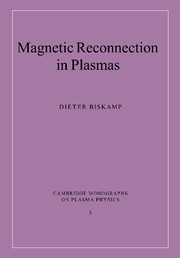1 - Introduction
Published online by Cambridge University Press: 23 December 2009
Summary
Since the early 1950s, when magnetohydrodynamics – MHD in short – became an established theory and along with it the concept of a “frozenin” magnetic field within an electrically conducting fluid, the problem of how magnetic field energy could be released in such a fluid has been generally acknowledged. In the early days the major impetus came from solar physics. Estimates readily showed that the energies associated with eruptive processes, notably flares, can only be stored in the coronal magnetic field, all other energy sources being by far too weak. On the other hand the high temperature in the corona, which makes the coronal plasma a particularly good electrical conductor, appeared to preclude any fast magnetic change involving diffusion. For a coronal electron temperature Te ~ 106 K the magnetic diffusivity is η ~ 104 cm2/s, hence field diffusion in a region of diameter L ~ 104 km as typically involved in a flare would require a time-scale τη = L2/η ~ 1014 s, whereas the observed flash phase of a flare takes less than ~ 103 s.
It had, however, soon been realized that the discrepancy is not quite as bad as this. Contrary to magnetic diffusion in a solid conductor, a fluid is stirred into motion by the change of the magnetic field. As it carries along the frozen-in field, it may generate steep field gradients typically located in sheet-like structures, and hence lead to much shorter diffusion times.
- Type
- Chapter
- Information
- Magnetic Reconnection in Plasmas , pp. 1 - 9Publisher: Cambridge University PressPrint publication year: 2000
- 1
- Cited by



